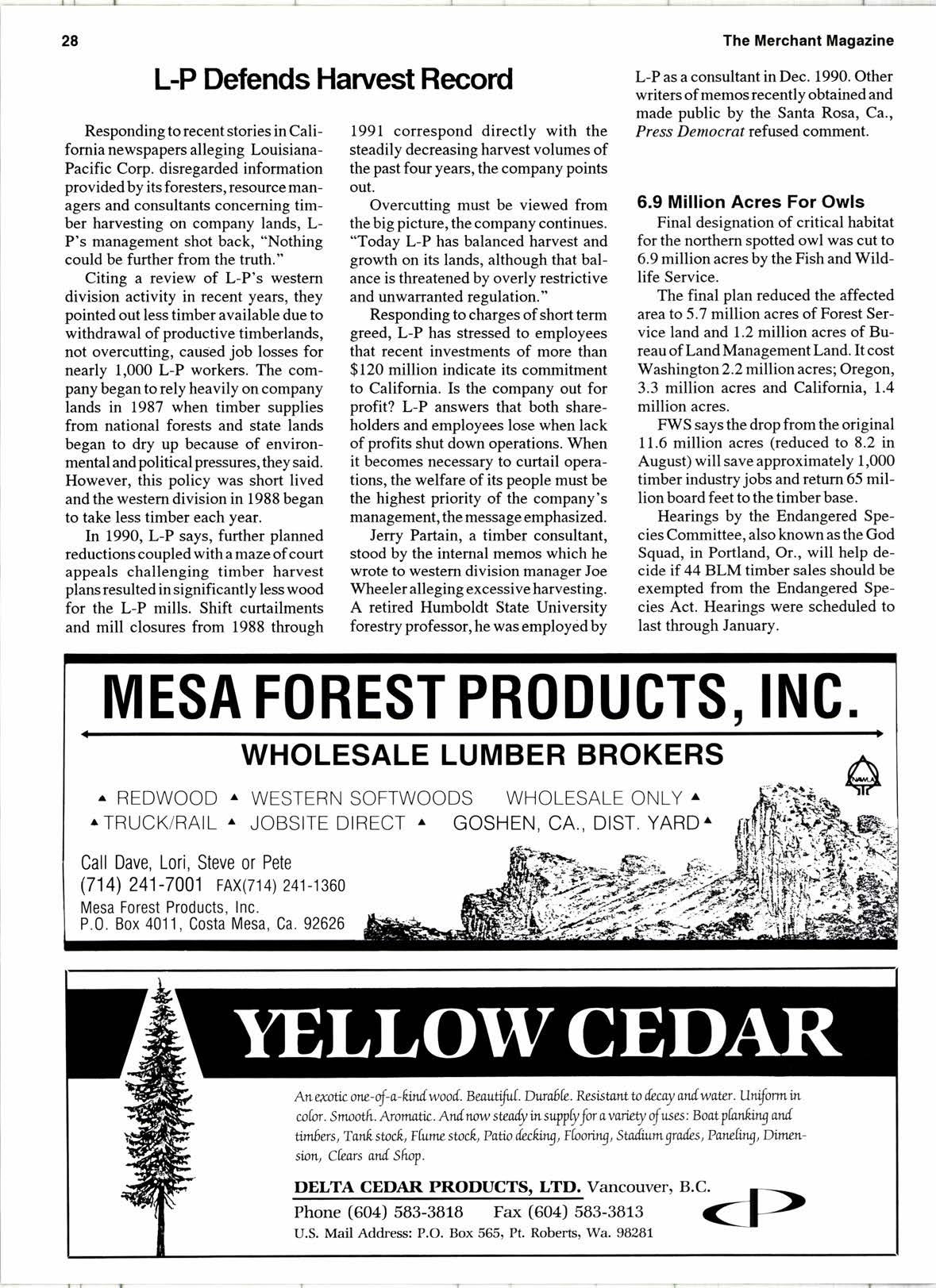
1 minute read
L-P tlefends Haruest Recod
Responding to recent stories in California newspapers alleging LouisianaPacific Corp. disregarded information provided by its foresters, resource managers and consultants concenilng timber harvesting on company lands, LP's management shot back, "Nothing could be further from the truth."
Citing a review of L-P's western division activity in recent years, they pointed out less timber available due to withdrawal of productive timberlands, not overcutting, caused job losses for nearly 1,000 L-P workers. The company began torely heavily oncompany lands in 1987 when timber supplies from national forests and state lands began to dry up because of environmental and political pressures, they said. However, this policy was short lived and the western division in 1988 began to take less timber each year.
In 1990, L-P says, further planned reductions coupled with a maze of court appeals challenging timber harvest plans resulted in significantly less wood for the L-P mills. Shift curtailments and mill closures from 1988 throueh
1991 correspond directly with the steadily decreasing harvest volumes of the past four years, the company points out.
Overcutting must be viewed from the big picture, the company continues. "Today L-P has balanced harvest and growth on its lands, although that balance is threatened by overly restrictive and unwarranted regulation. "
Responding to charges ofshort term greed, L-P has stressed to employees that recent investments of more than $120 million indicate its commitment to California. Is the company out for profit? L-P answers that both shareholders and employees lose when lack of profits shut down operations. When it becomes necessary to curtail operations, the welfare of its people must be the highest priority of the company's management, the message emphasized.
Jerry Partain, a timber consultant, stood by the intemal memos which he wrote to western division manager Joe Wheeler alleging excessive harvesting. A retired Humboldt State University forestry professor, he was employdd by
L-P as a consultant in Dec. 1990. Other writers of memos recently obtained and made public by the Santa Rosa, Ca., Press Democraf refused comment.
6.9 Million Acres For Owls
Final designation of critical habitat for the northern spotted owl was cut to 6.9 million acres by the Fish and Wildlife Service.
The final plan reduced the affected area to 5.7 million acres of Forest Service land and L2 million acres of Bureau of Land Management Land. It cost Washington 2.2 million acres; Oregon, 3.3 million acres and California, 1.4 million acres.
FWS saysthe dropfromthe original 11.6 million acres (reduced to 8.2 in August) will save approximately 1,000 timber industry jobs and return 65 million board feet to the timberbase.
Hearings by the Endangered Species Committee, also known as the God Squad, in Portland, Or., will help decide if 44 BLM timber sales should be exempted from the Endangered Species Act. Hearings were scheduled to last through January.










